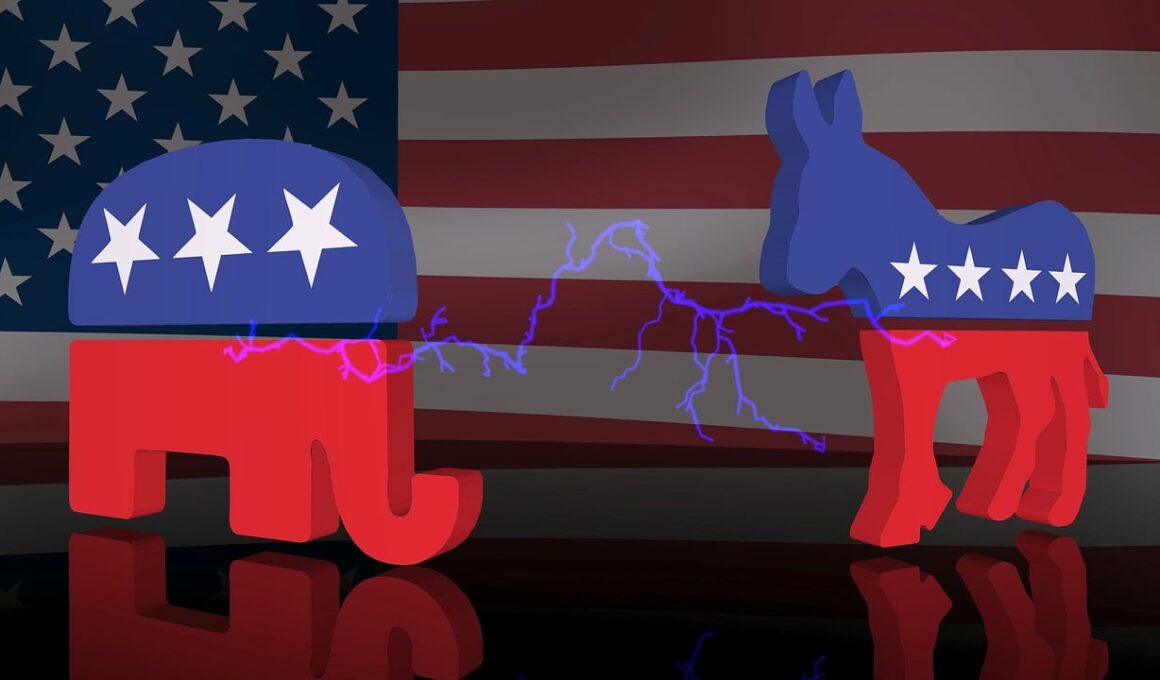The Role of Social Media in Political Campaign Crisis Escalation
Political campaigns are highly sensitive periods that can significantly impact public perception and voter behavior. Social media has transformed this landscape, acting as both a platform for communication and a stage for crisis escalation. The speed at which information spreads on platforms such as Twitter and Facebook can exacerbate the effects of a crisis. A single post can initiate a chain reaction, leading to widespread media coverage and public outrage. This has been evident in various political campaigns where missteps were amplified by social media. Key variables include the nature of the crisis, the timing of responses, and the demographics of the audience engaged. Candidates often find themselves at the mercy of rapidly evolving discussions that are difficult to control or mitigate. Online fact-checking and citizen reporting add layers of complexity. In many cases, these elements cause campaigns to shift from proactive strategies to reactive damage control modes quickly, which can further complicate the political narrative and confuse the constituency.
The dynamics of social media during a political campaign crisis are influenced by several factors as well. One of the most critical elements is the audience’s emotional engagement. Social media users tend to react not only based on facts but also on their emotional responses. The factors that influence these reactions include political affiliation, prior experiences, and the existing media environment. In such a fast-paced space, misinformation can spread almost instantly, leading to events spiraling out of control. Engaging content, whether factual or biased, often garners more shares and reactions, magnifying its reach. Therefore, campaigns must prepare not only for traditional media responses but for the unpredictable nature of digital dialogue as well. Smart campaigns identify potential crisis points and implement strategies to either defuse tension preemptively or rapidly address an issue upon emergence. Through monitoring tools and targeted messaging, candidates can attempt to guide public opinion. However, the very nature of social media often complicates these efforts, requiring a nuanced understanding of both digital dynamics and audience psychology.
Another important aspect of social media’s role in campaign crises is the influence of viral content. Viral trends can shift public sentiment substantially within a matter of hours. A minor issue can become a major crisis simply by being amplified through likes, retweets, and shares. For instance, during the recent political campaign periods, countless hashtags garnered attention, turning issues into trending topics that pressured candidates and their teams to address them urgently. Candidates can capitalize on this phenomenon by joining the conversation and aligning their messaging with trending themes. Alternatively, ignoring trending crises can lead to significant backlash, making it imperative for campaigns to stay vigilant and responsive. The nature of viral content often blurs lines between fact and fiction, leading to challenges in clarifying misinformation. Responding quickly is essential, as delays often allow rumors to gain momentum. Yet, overly aggressive or poorly executed responses may also escalate tensions. Therefore, balancing responsiveness with strategic communication is crucial in ensuring that a political campaign can navigate the complexities of social media effectively.
Case Studies of Crisis Escalation
The analysis of past political campaign crises reveals critical lessons regarding social media’s role. One notable example is the 2016 U.S. Presidential Election, during which several candidates faced crises surrounding their statements and actions. Candidates who responded proactively via social media managed to mitigate damage more successfully than those who failed to address emerging issues immediately. This case highlights the importance of timing and message management. Effective use of social media allowed candidates to control narratives rather than allowing the opposition or the public to dictate the conversation. A well-crafted tweet or post can effectively resonate with supporters, allowing for immediate clarifications and pledges that can quell dissatisfaction. Additionally, campaigns often initiate ‘rapid response’ teams tasked with monitoring social media discussions and crafting timely responses to emerging crises. These teams can also curate positive content that counters negative sentiments, which is vital for shaping public perception in politically charged environments. Developing a comprehensive social media strategy that includes crisis management protocols is necessary for candidates to navigate potential pitfalls effectively.
The role of social media influencers during political crises also cannot be overlooked. Influencers often have substantial followings, enabling them to sway public opinion significantly. During critical campaign moments, their endorsement or denouncement of a candidate can either exacerbate or alleviate crisis situations. For instance, influencers who align themselves with candidates can offer crucial narrative framing that may downplay negative aspects of a campaign or highlight strengths. Conversely, if influencers criticize or mock a candidate, social media amplifies these reactions; dangerous narratives can rapidly take hold. Leveraging influencers effectively requires strategic partnerships that align with a campaign’s values. The authenticity perceived by their audience can lend significant credibility to candidates. This underscores the importance of vetting prospective influencers carefully to ensure alignment. When influencers maintain authenticity, they can act as powerful allies in a candidate’s narrative, helping to build resilience against potential crises. However, any misalignment between a campaign and its influencers can result in disastrous fallout, rendering thorough research and relationship-building necessary for sound political strategy.
Finally, the technological aspect of social media platforms themselves plays a critical role in crisis propagation. Algorithms that dictate content visibility are often designed to favor engaging or controversial posts, thereby increasing the chances of misinformation reaching a wider audience. This aspect can exacerbate crises unexpectedly, making it fundamental for campaigns to understand how their messaging may be affected by platform dynamics. Social media companies continuously evolve their algorithms, which means that campaigns must remain agile in their strategies. Investigating metrics on post engagement, reach, and audience reaction allows campaigns to adapt and optimize their approach to crises. In some instances, campaigns may need to engage directly with platform representatives to manage narratives, particularly if misinformation spreads aggressively. However, this can be challenging due to platforms prioritizing user-generated content, complicating efforts to promote accurate information. Therefore, campaigns must actively engage in media literacy efforts to educate supporters about credible resource continuums, empowering them to discern misinformation. In this way, political entities can cultivate a more informed electorate, equipping them to navigate the intricate social media landscape.
In conclusion, the intersection between social media and political campaign crises reveals a complex landscape that requires strategic foresight. The speed and scale at which crises can escalate demand that campaigns perpetually monitor, analyze, and adapt their strategies. Historical case analyses illustrate the necessity of response readiness and highlight the vital roles of influencers and platform algorithms. Additionally, understanding the audience’s emotional triggers enables campaigns to craft nuanced messages that resonate effectively. As we move forward in this digital age, campaigns must adopt integrative approaches toward social media management that encompass proactive crisis preparation. Learning from past missteps and embracing adaptive measures will aid in refining political narratives while fostering voter trust. In periods of crisis, consistency and transparency in communication remain crucial. Politicians must engage meaningfully with constituents across platforms and focus on disseminating accurate information while maintaining their authenticity. Future campaigns will undoubtedly face challenges regarding social media dynamics; thus, preparing comprehensive strategies is paramount for navigating the complexities of political crises in this evolving landscape.


